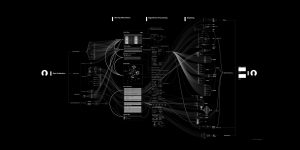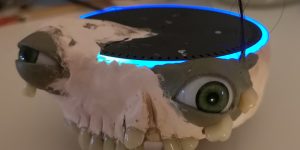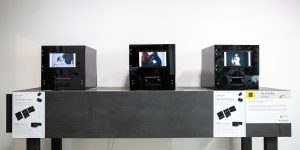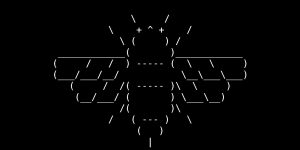reality

Science Man
Valentin Godard (FR)
“He welds circuits / and codes all night / Science-man! He makes robots / secretly in his lab, Science-man! He mixes chemicals / without any technical problems, Science-man!” Part human, part dog, Science-Man is a fictional character who is embodied in various ways: newspaper, comics, performances, figurines, etc. He is halfway between our reality and a sensitive and complex technological future.

Facebook Algorithmic Factory
Vladan Joler (RS)
Facebook Algorithmic Factory sheds light on the invisible processes that take place inside the world’s largest social network. Inside this black box, non-transparent algorithms are deciding what kind of content will become a part of our reality, what will be censored or deleted, which ideas will spread and what news will gain most visibility. They are also defining new forms of labour and exploitation.

tx-reverse 360°
Virgil Widrich (AT), Martin Reinhart (AT)
20 years after Martin Reinhart and Virgil Widrich used this film technique for the first time in a short film (tx-transform, 1998), they again deal with the question of what previously unseen world arises when space and time are interchanged, in a cinema at full 360°.

Into The Distance
University of the Arts London, London College of Communication, MA Interaction Design Communication (UK)
In dieser Ausstellung setzen wir uns für eine Zukunft ein, in der wir die Dinge anders und besser machen als in der Vergangenheit. Die Vergangenheit der „digitalen Revolution“ im Geiste von Hartleys Zitat zu sehen, bedeutet nicht, sie zu verleugnen; es ist eine Gelegenheit, eine neue Sichtweise von ihr zu entwickeln, eine Chance, über ihre Trends und gescheiterten Versprechen aus heutiger Perspektive zu reflektieren. Wir können unseren Blick weiter in die Ferne lenken, sowohl hinter als auch vor uns; um zu erforschen, wie ältere (oder antike) Ideen und Konzepte zu wirkmächtigen kritischen Werkzeugen werden können, um aktuelle und zukünftige Herausforderungen zu ergründen.

PSEUDOREALITY ALTERNATIVES
Cheung Kong School of Art and Design – Digital Media Art Department, Shantou University
Worldwide human society is moving from the digital to hyper digital age where virtuality is becoming as important as reality. Interpersonal communication is largely happening within a pseudo-real social landscape recently enriched with new artificial intelligence. However, we still find it confusing to navigate our existing social environment and understand each other clearly on different levels such as cultural, emotional, intellectual, and interpersonal. Through the works exhibited by Cheung Kong School of Art and Design, students are trying to communicate ideas of multiple understandings and misunderstandings, subtle and alternative meanings, and how that can affect our social and emotional realities. As artists and descendants of the Bauhaus, we recognize that our role is changing. We no longer believe in the heroic genius of the master who forms the world in a state of intuition. Embedding and feedback reveal that responsible action requires diverse cognitive variations that involve the counterpart in a performative way.

Nothing wild in particular
Jeremie Nuel (FR)
Consciousness, memory, reality and identity are regular themes in Philip K. Dick’s books. These concepts have fed into AI research since the seventies. This work uses Andrej Karpathy’s neural network, known as “recurrent,” to train a computer program, using as source a text or a corpus. Once trained, the code writes, character by character, a new text. The corpus that feeds the neuronal network shortens Philip K. Dick’s work (52 books). As a mirrored entity, strange and undisciplined, the computer program tries to write, at every iteration, step by step, an often-absurd story, and sometimes, a poetic one.


